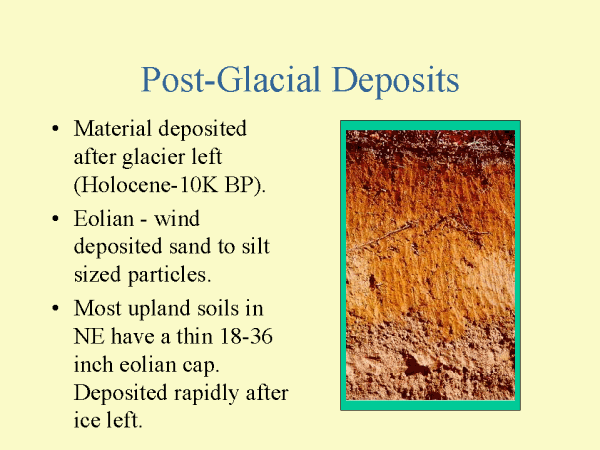| First Previous Next Last Index Home Text Slide 21 of 22 |
 |
NOTES:
Once glacial ice left the region, a periglacial environment followed for many years. Permafrost soil conditions covered the region and tundra vegetation began to grow. Once the climate warmed, the Holocene epoch began and our modern-day soil began to form. With glacial ice just to the north, strong winds were generated by the contrasting temperatures. The winds generated huge dust storms and a blanket of wind-blown deposits, called eolian material, was deposited over the barren glacial material. Most of our upland soils have a thin (18-36 in) cap of eolian material, the texture of the cap ranges from sand to silt-loam.